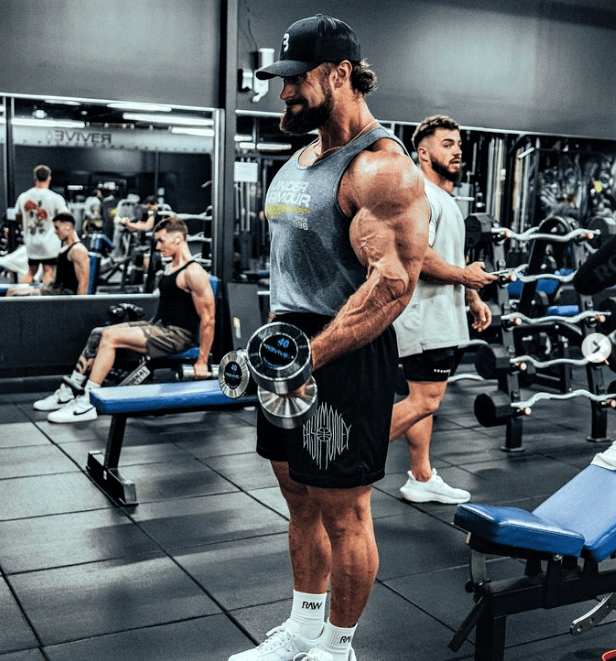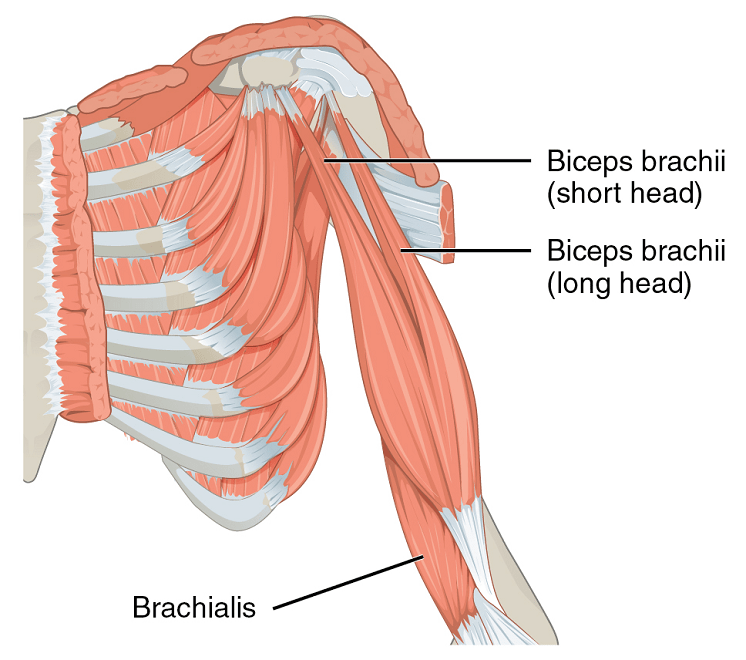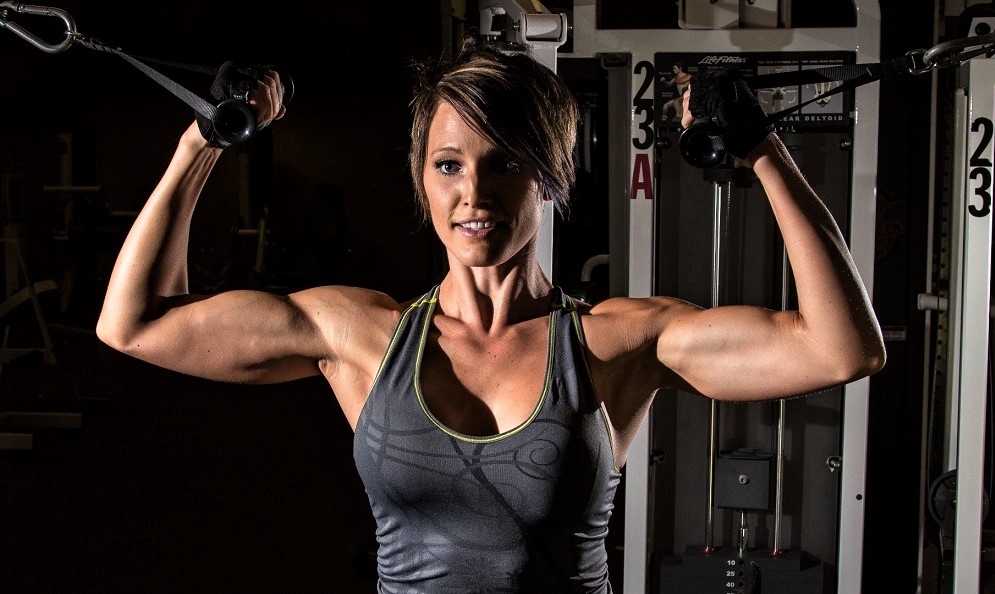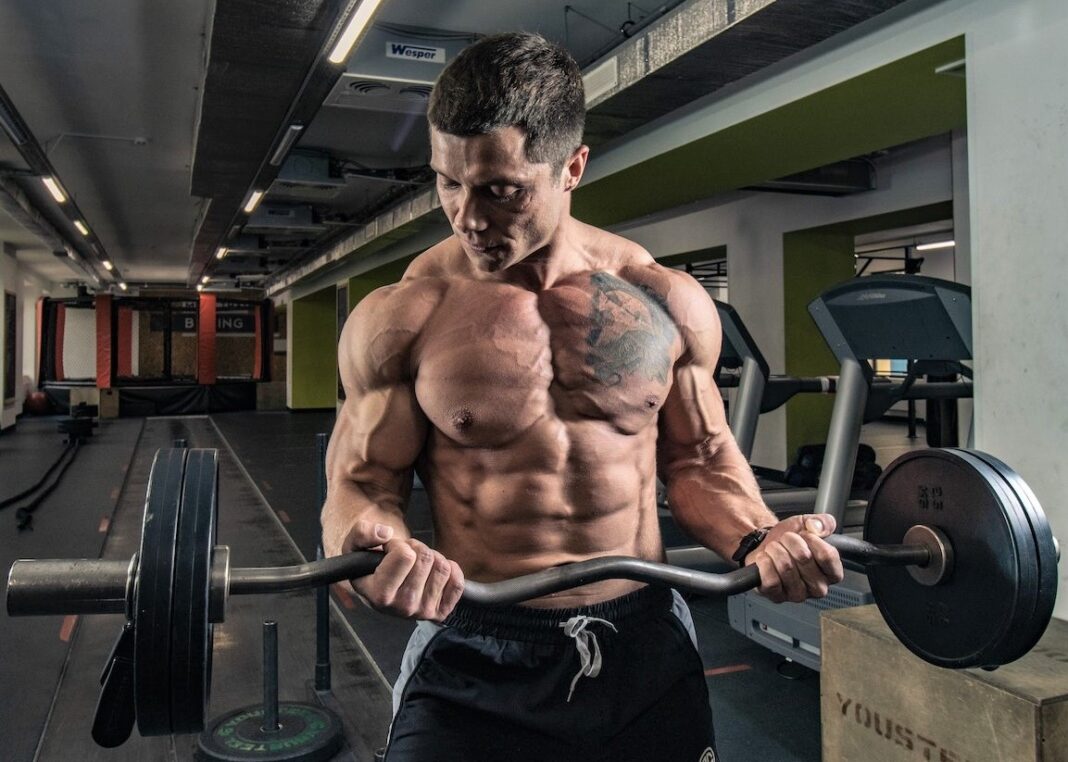Alexa Popovich
Biceps are like burgers. Everyone loves them. Ask a kindergartner to make a muscle and he or she will strike a biceps shot. Biceps are synonymous not just with posing but with exercise, and, after your first year in the gym, you’ve probably read or heard or absorbed so much about curling you’re tempted to think you know everything already. That would be your first biceps mistake. The fact is most people train biceps wrong, again and again and again. Luckily, The Barbell has science-based solutions to the most common biceps workout blunders. This is your curling course on how to correct the mistakes and target your biceps for maximum growth.
BICEPS WORKOUT MISTAKE #1: CHEATING TOO EARLY.
Biceps curls are probably the easiest exercises to cheat. Whenever your arms are not resting on a bench (as during a preacher or machine curl), all it takes is a little swing to shift some tension from your arms to your front delts and back and make a hard rep easier. Cheating is a valuable tool for pushing sets beyond strict, full-rep failure, but if you cheat before then it’s likely you’ll never thoroughly stress your bi’s. In an effort to hump up heavier weights than they could otherwise use, many weight-trainers start cheating on curls from the first rep and increase their swinging as the set wears on. This is a big mistake.

SOLUTIONS
✔️ If necessary, go lighter. Do strict reps until you reach failure.
✔️ To remove your legs and hips from the movement, do dumbbell curls seated.
✔️ When doing standing curls, if necessary, keep your back against a wall and/or press your elbows against your sides.
✔️ Machine, preacher, or spider curls are another way to insure you perform your curls strictly, but make certain the back of your arm stays pressed flat against the bench’s pad on each rep.
✔️ To push sets beyond strict, full-rep failure, do two or three extra reps with a slight arm swing. However, do this only after reaching failure with strict curls.
BICEPS WORKOUT MISTAKE #2: DOING TOO MUCH
The popularity of biceps doesn’t make them any larger in relation to other body parts. Compared with your lats, for example, your biceps are puny, so if you’re pumping out as many sets in your biceps workout as your back workout, you’re likely doing too much for these “little” muscles. More than any other muscles, biceps are frequent victims of overtraining, thus halting or even reversing their gains.
SOLUTIONS
✔️ Beginners should do only six sets for biceps. After four months of training, you can gradually add sets.
✔️ Advanced bodybuilders should typically do 10-12 sets for biceps.
✔️ At maximum, push only the final set of each exercise beyond failure via techniques like cheating, forced reps, negatives, and drop sets.
BICEPS WORKOUT MISTAKE #3: MISSING THE TARGET
More nonsense has been published about biceps training than any other body part. For examples, it used to be preached as gospel (and too often still is) that to accentuate your lower biceps “thy must do preacher curls” and to accentuate your biceps peaks “thou shall do concentration curls.” Neither “tenet” is true, so it’s no wonder so many weight-trainers fire off curls but miss their intended targets. In fact, you can’t put any greater emphasis on your lower biceps than the rest of the muscle and merely concentrating on contractions won’t raise your biceps peaks. The biceps are a relatively simple muscle that control a hinge (elbow) joint, so too many people are expecting too much from curling exercises.

SOLUTIONS
✔️ Don’t overthink biceps training. The various types of curls are not going to affect your biceps in substantially different ways. Do not focus on the “lower” or “upper” biceps (there are no such divided areas), but instead focus on doing curls from full stretches to full contractions.
✔️ If you choose, you can focus on the two heads of your biceps. The short head (inner side) is recruited more when curls are preformed with a grip that keeps pinkies higher than or even with other fingers. The long head (outer side) is recruited more when curls are performed with thumbs higher than pinkies, as when taking an angled grip on an EZ-bar or using a parallel grip for hammer curls. That said, the two heads, which share the same bottom tendon, are going to be involved in every curl (if at slightly different rates depending on hand positions) and, therefore, are not going to grow at substantially different rates.
✔️ The shape of your biceps is largely genetic, so don’t expect to go from flat to highly peaked or vice versa if it’s not preordained in your DNA. Focus instead on maximizing biceps size and strength.
✔️ If you find one type of curl is especially effective for you, do more of it. You may even benefit from doing biceps workouts of only that curl.
BICEPS WORKOUT MISTAKE #4: INSUFFICIENT VARIETY
This may seem to contradict what we just said. However, it’s easy to get into a rut with biceps doing the same curls in the same sequence and sleep-walking through your same-old arm routine. The simplicity of these simple, hinge-joint muscles can be both their strength and their weakness. Different curls are not going to stress your biceps in markedly different ways. However, variety is an excellent way to keep up your workout enthusiasm and intensity.

SOLUTIONS
✔️ Do one EZ-bar or barbell curl exercise, one dumbbell curl exercise, and one machine or cable curl exercise each workout.
✔️ Do one of the exercises standing, one seated, and one with the working arm(s) restricted against your body or a bench.
✔️ Do at least one unilateral curl each biceps workout.
✔️ On occasion, do unique exercise like drag curls, chin-ups (underhand), two-arm high cable curls, and rope hammer curls. A workout consisting of all four for three sets each should break the monotony of more traditional curls.
BICEPS WORKOUT MISTAKE #5: SHORTENED RANGES OF MOTION
Too many weight trainers shortchange both the stretches and the contractions of curls. This is because they use too much weight and perform their reps quickly and with excessive momentum and/or with reduced ranges of motion. New research indicates that the initial portion of curls (starting from a full stretch when the arm is straight) is the most effective part of the range of motion for both biceps growth and strength gains.
SOLUTIONS
✔️ Begin each curl rep from a full stretch and end each each rep with a full contraction.
✔️ If necessary, go lighter. Use a weight you can manage for 8-12 strict, full reps.
✔️ Curl slowly. Take approximately two seconds to raise the weight, hold the contraction briefly and squeeze, and take approximately two seconds to lower the weight.
✔️ During dumbbell curls, supinate your wrists so your palms are facing your sides at the bottom and facing up at contraction. Reverse this when you lower the weight on each rep. Forearm/hand supination is another function of the biceps.

BICEPS WORKOUT: LESSONS LEARNED
Perform strict reps. Cheat only to extend a set.
Use low to moderate volume.
Don’t overthink biceps “target” training.
Do dissimilar types of curls in the same workout.
Emphasize stretches and contractions on every rep.
Related:
















































